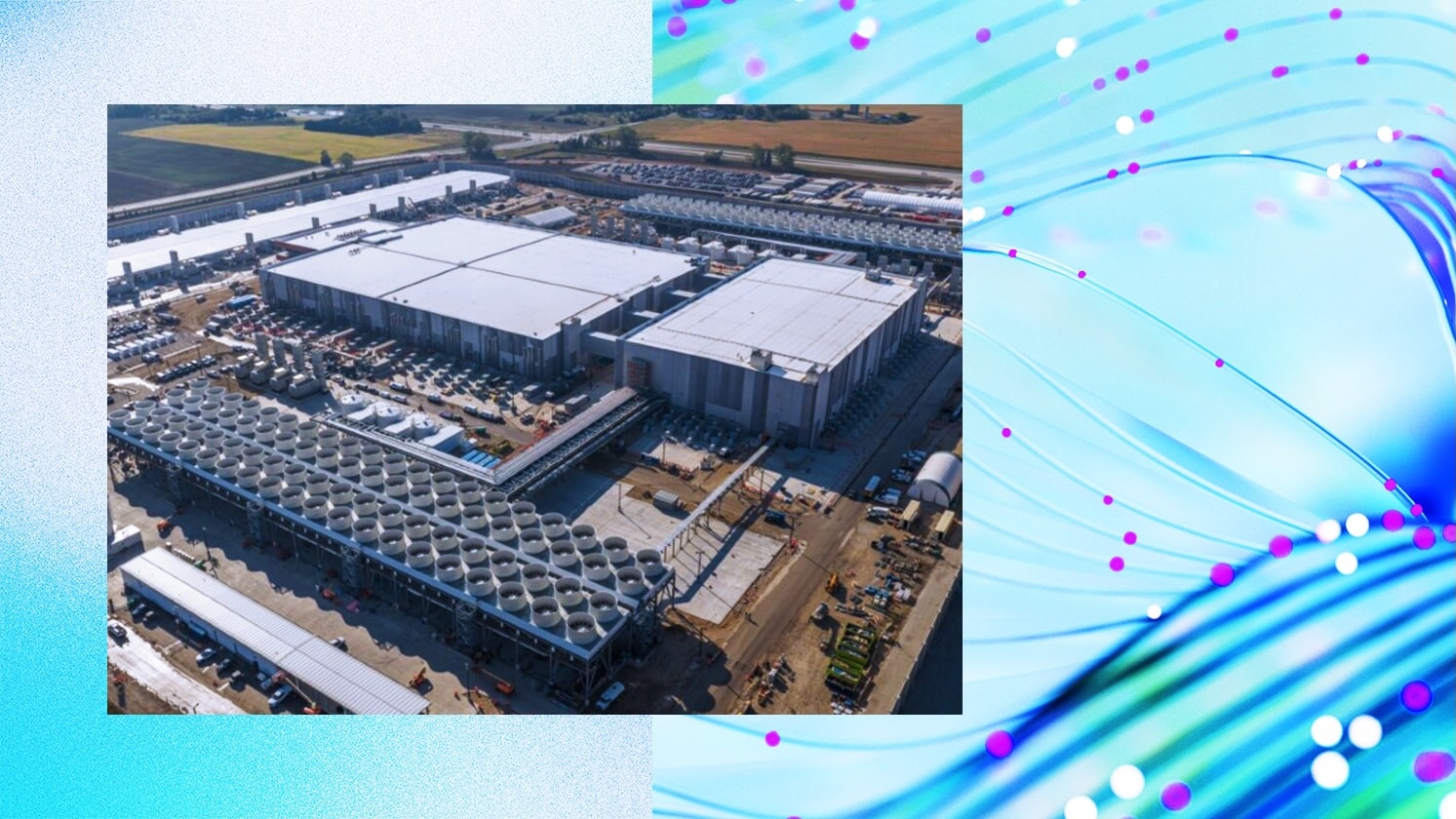In the heart of the U.S. Midwest, Microsoft is finishing construction on Fairwater, an artificial intelligence data center that is already emerging as the most powerful on the planet. The company, which launched the project with an initial investment of $3.3 billion, has announced it will allocate an additional $4 billion over the next three years to build a second facility with similar features, bringing the total investment in Wisconsin to over $7 billion.
Brad Smith, Microsoft’s President, described the project as “more than a technological feat: a commitment to the community and responsible innovation”.
An infrastructure designed for the next decade of AI
Fairwater has been designed to train the next generation of AI models, hosting hundreds of thousands of cutting-edge NVIDIA GPUs. These units will be interconnected by fiber optic cables long enough to wrap around the planet four times, enabling a tenfold increase in performance over current supercomputers.
The aim of the facility is clear: to accelerate the development of frontier models that transform fields such as medicine, science, and industrial research. According to the company, this center will not only run AI models but also create them, positioning Wisconsin as one of the global hubs of digital innovation.
Sustainability at the core of design
One of Fairwater’s most innovative aspects is its focus on energy efficiency and minimal environmental impact:
- 90% of the center will operate with a closed-loop liquid cooling system, filled during construction and recirculated continuously.
- The remainder will use outside air, relying on water only on the hottest days.
- The annual water consumption will be equivalent to that of a typical restaurant or an 18-hole golf course in one summer week.
In parallel, Microsoft has signed a deal to offset every fossil kilowatt with renewable energy, including a 250 MW solar project in Portage County. Additionally, together with WE Energies, it will explore new mechanisms for energy transmission and generation under transparent rates to ensure grid reliability.
The company has also partnered with the Root-Pike Watershed Initiative Network (WIN) to restore prairies and wetlands in Racine and Kenosha, funding 20 ecological projects, such as the recovery of Cliffside Park on Lake Michigan and the Lamparek Creek area in Mount Pleasant.
A driver of employment and training
During its construction phase, Fairwater employed more than 3,000 daily workers, including electricians, plumbers, carpenters, welders, and heavy machinery operators. Once operational, the first data center is expected to employ about 500 people permanently, a number that will grow to 800 workers when the second complex is up and running.
Furthermore, Microsoft has launched Wisconsin’s first Data Center Academy in collaboration with Gateway Technical College, aiming to train more than 1,000 students over five years for high-demand roles in data center operations.
Simultaneously, the company has already trained 114,000 people in AI skills across the state, including 1,400 residents of Racine County, through partnerships with universities, technical colleges, and organizations like United Way.
A hub of innovation for local businesses
Fairwater will not only attract talent and jobs but also act as a catalyst for local companies:
- The first co-innovation AI laboratory for manufacturing was launched on the University of Wisconsin-Milwaukee campus, in partnership with WEDC, Gateway Technical College, and TitletownTech (a joint venture between Microsoft and the Green Bay Packers).
- The laboratory has already helped 23 Wisconsin companies, from large industrials like Regal Rexnord to small family businesses like Wiscon Products, founded in 1945, turn AI ideas into concrete solutions.
- The expansion of broadband has already benefited 9,300 rural residents and improved connectivity for 1,200 homes and businesses in Sturtevant, bringing high-speed internet to rural communities.
A project with national impact
Microsoft presents this megaproject as a model of inclusive technological development, where innovation is not limited to coastal megacities. According to Brad Smith, “Mount Pleasant is not just becoming an AI hub: it’s an example of how innovation can serve everyone, respecting people, place, and planet”.
The company emphasizes that Wisconsin, with its industrial heritage, is poised to play a key role in the digital future of the United States, demonstrating that AI and traditional manufacturing can coexist and strengthen each other.
Conclusion
With an investment exceeding $7 billion, Microsoft is transforming Mount Pleasant into a new Silicon Valley of the Midwest, where technological infrastructure, environmental sustainability, talent development, and business innovation converge.
Fairwater will not only be the world’s most powerful AI data center but also a symbol of how digital transformation can directly benefit local communities, creating jobs, preserving the environment, and establishing Wisconsin as a center of the new AI economy.
Frequently Asked Questions (FAQ)
When will the Fairwater data center become operational?
It is expected to start operating in early 2026, with the capacity to train next-generation AI models.
What impact will it have on local employment?
During construction, over 3,000 workers daily were employed. Once operational, 500 permanent jobs will be created, increasing to 800 jobs with the second center.
How will Microsoft ensure the project’s sustainability?
Through a closed-loop liquid cooling system that minimizes water use, solar energy projects to offset fossil fuel consumption, and ecological restoration programs in the region.
What benefits will it bring to Wisconsin communities?
Besides jobs, there will be training through the Data Center Academy, access to rural broadband, and a co-innovation AI lab for local businesses to develop AI-driven solutions.
via: blogs.microsoft

